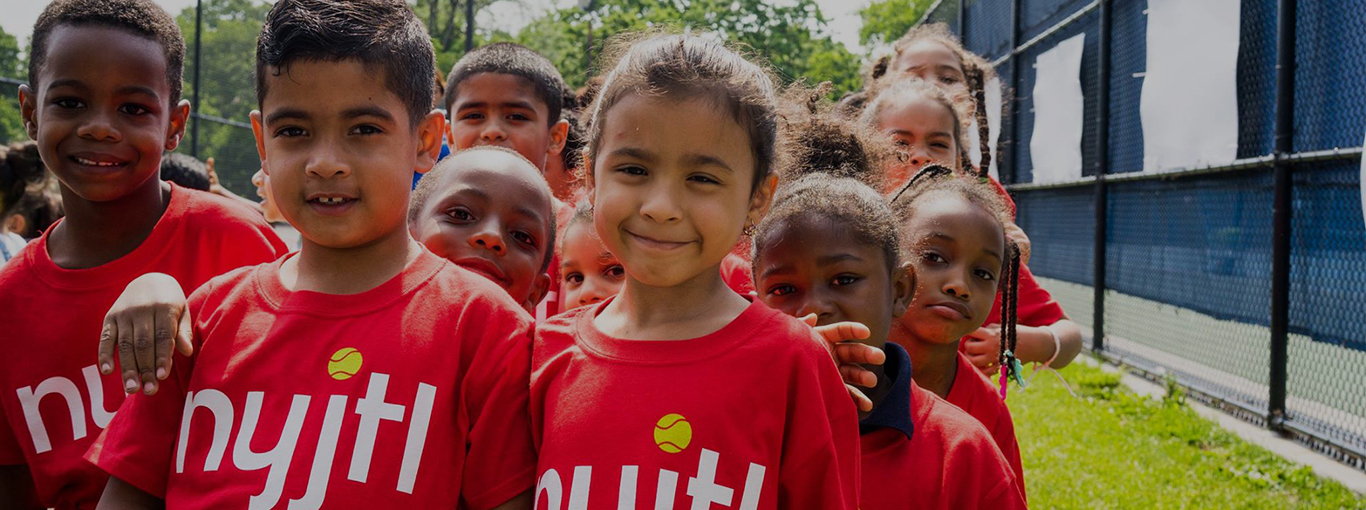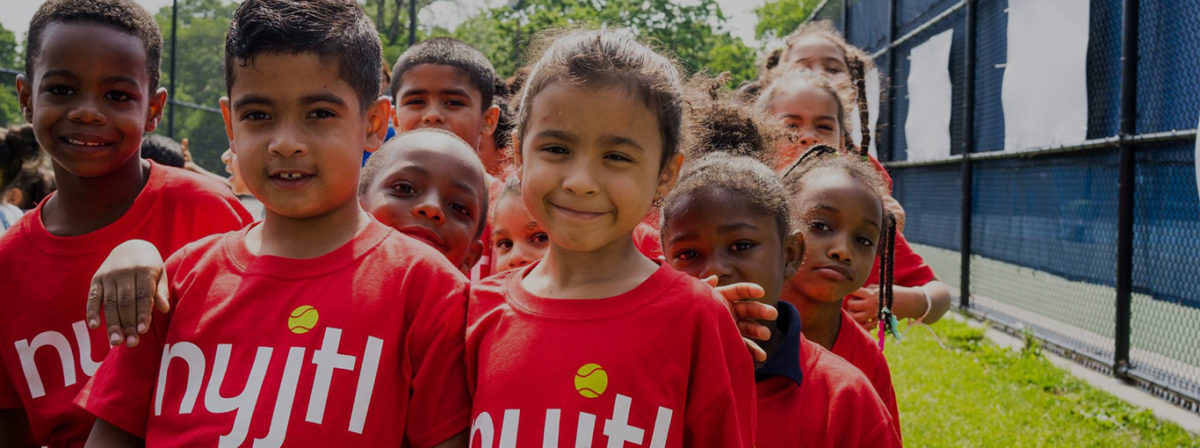By Bahar Ostadan
news@queensledger.com

Young children have a blast with NYJTL. (Photo Credit: NYJTL)
A squad of tiny zombies stumbled across the playground at I.S. 204 at 28th Street and 36th Avenue in Long Island City this past Friday morning.
Arms out, huffing under the July sun, the 10-year-olds cycled through tennis warm-ups.
These young players are just a few of the 85,000 that New York Junior Tennis & Learning serves (pun intended) every year.
As the largest nonprofit tennis program in the country, NYJTL offers community and after school tennis classes in all five boroughs for free.
Long Island City site director, Giovanny Ramos, grew up as a student in the program himself.
After a few labored lunges, the kids teamed up on either side of the net. Six on six, The Average Joe’s versus Team Star.
“The rules are easy!” Ramos yelled. “The ball cannot stop, nor can it roll.”
Just as the players settled into position, gripping rackets twice the size of their heads, Ramos lowered his voice for one last detail, “Remember, we want the ball to go over the net.”
NYJTL was co-founded in 1971 by Arthur Ashe, the first and only Black man to win the U.S. Open and Black American man to win a Grand Slam title.
“Our idea is to use tennis as a way to gain and hold the attention of young people in the inner cities and other poor environments so that we can teach them about matters more important than tennis,” Ashe is quoted on NYJTL’s website.
“[Ashe] was an incredible example of access to opportunity and perseverance,” said Udai Tambar, president of NYJTL. “We’re trying to make sure that DNA of the organization continues on.”
“By low-income communities of color, tennis is seen as inaccessible,” he continued. “Like, this is a country club sport. This is not for us.”
Today, 83 percent of NYJTL’s students are Black, Asian, Latino or “other,” and come from families with an average household income of $37,500—a stark departure from the city’s private tennis programs that can cost over $1,000 per week.
NYJTL set up mini nets and painted court lines at 32 sites around the city this summer, often in school gyms or even cafeterias.
This year they trained 110 gym teachers across the city who now can teach tennis to their students in schools, where NYJTL provides balls and equipment.
A hallmark of the program is their 3 million hours of court time teaching and training each year.
“We’ll bring the tennis courts to you,” said Tambar. “We’re saying, you belong in this sport, and if you belong in this sport, you also belong in other spaces, which you think you are excluded from.”
Tambar, who grew up playing tennis in Queens, said he didn’t expect to be running a nonprofit one day, let alone one with a $20 million operating budget.
“I don’t think there are many Asian American or South Asian American CEOs of nonprofits,” said Tambar. “To feel comfortable in this role means that you have to be able to overcome discomfort in other places in life.”
In fact, he’s in the 2 percent of nonprofit CEOs who identify as Asian, according to 2017 data from the National Index of Nonprofit Board Practices.
“Playing tennis…it was part of the building blocks that prepared me for this current role,” he said.
At I.S. 204 that morning, parents lined the court, scattered among tiny backpacks and frozen water bottles.
A boy on Team Star, barely standing taller than the net, stared blankly at a ball spinning toward him.
Seconds later, Ramos leaped and yelled, “That’s 3-1 for The Average Joe’s!”



